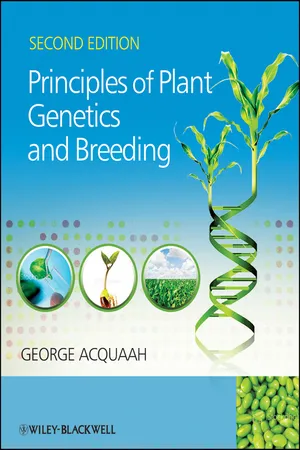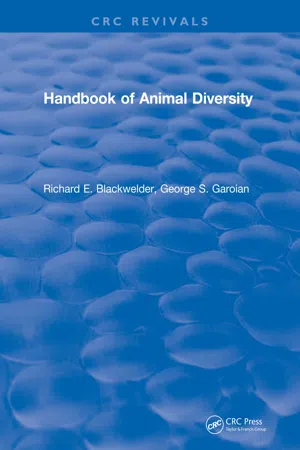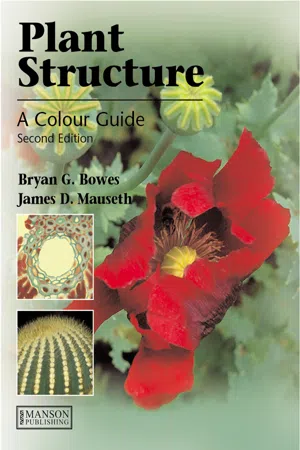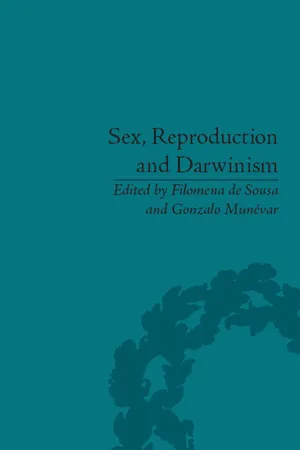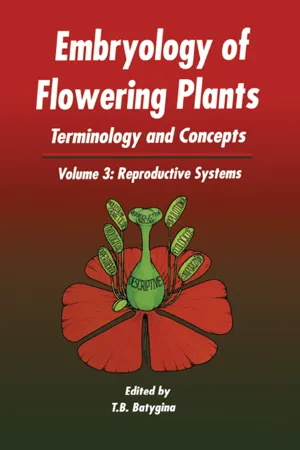Biological Sciences
Asexual Reproduction in Plants
Asexual reproduction in plants is a process where new individuals are produced from a single parent without the involvement of gametes. This can occur through various methods such as fragmentation, budding, or the production of specialized structures like runners or bulbs. Asexual reproduction allows plants to rapidly propagate and colonize new areas, but it limits genetic diversity.
Written by Perlego with AI-assistance
Related key terms
9 Key excerpts on "Asexual Reproduction in Plants"
- eBook - ePub
- George Acquaah(Author)
- 2012(Publication Date)
- Wiley-Blackwell(Publisher)
gametes . Gametes are products of meiosis and, consequently, seeds are genetically variable. Asexual or vegetative reproduction mode entails the use of any vegetative part of the plant for propagation. Some plants produce modified parts, such as creeping stems (stolons or rhizomes), bulbs or corms, which are used for their propagation. Asexual reproduction is also applied to the condition whereby seed is produced without fusion of gametes (called apomixis). It should be pointed out that some plants could be reproduced by either the sexual or asexual mode. However, for either ease of propagation or for product quality, one mode of reproduction, often the vegetative mode, is preferred. Such is the case in flowering species such as potato (propagated by tubers or stem cuttings) and sugarcane (propagated by stem cuttings).5.4 Sexual Reproduction
Sexual reproduction increases genetic diversity through the involvement of meiosis. Flowering plants dominate the terrestrial species. Flowering plants may reproduce sexually or asexually.5.4.1 Sexual Lifecycle of a Plant (Alternation of Generation)
The normal sexual lifecycle of a flowering plant may be simply described as consisting of events from first establishment to death (from seed to seed in seed-bearing species). A flowering plant goes through two basic growth phases – vegetative and reproductive , the former preceding the latter. In the vegetative phase, the plant produces vegetative growth only (stem, branches, leaves, etc., as applicable). In the reproductive phase, flowers are produced. In some species, exposure to a certain environmental factor (e.g., temperature, photoperiod) is required to switch from the vegetative to the reproductive phase. The duration between phases varies among species and can be manipulated by modifying the growing environment.For sexual reproduction to occur, two processes must occur in sexually reproducing species. The first process, meiosis, reduces the chromosome number of the diploid (2n ) cell to the haploid (n ) number. The second process, fertilization, unites the nuclei of two gametes, each with the haploid number of chromosomes, to form a diploid. In most plants, these processes divide the lifecycle of the plant into two distinct phases or generations, between which the plant alternates (called alternation of generation ) (Figure 5.1 ). The first phase or generation, called the gametophyte generation , begins with a haploid spore produced by meiosis. Cells derived from the gametophyte by mitosis are haploid. The multicellular gametophyte produces gametes by mitosis. The sexual reproductive process unites the gametes to produce a zygote that begins the diploid sporophyte generation - eBook - ePub
- Peter Scott(Author)
- 2013(Publication Date)
- Wiley-Interscience(Publisher)
Longevity . Plants may, in many instances, be long-suffering and long-lasting, but if the great extinctions of the past teach us anything, it is that nothing lasts forever. No matter how old an individual plant is, one day conditions will change to make survival impossible. Plants need some means of surviving such adverse conditions, which may be local or temporary, and reproduction can offer a solution to this. Clonal plants may move away from the point of origin of the mother plant and therefore widen the spread of the plant, thereby escaping a particular stress. In addition, seeds offer even greater opportunities to disperse genetic material well away from the parent plant and also provide a structure that can remain dormant over prolonged periods. This permits a plant to survive temporary changes in conditions. Clones or seeds also produce new individuals which are free from fungal infections or damage present in the parent plant.3. Genetic variation . Finally, reproduction offers opportunities for genetic variation, which is essential in a changing habitat. Asexual reproduction offers little opportunity for genetic variation but the potential from sexual reproduction is immense.In this chapter we will look in greater detail at how plants reproduce and the merits and limitations of the different methods.Asexual reproduction
Many plant species use asexual reproduction as a means of propagation. Asexual reproduction has several advantages and disadvantages (Figure 9.1 ). This form of reproduction produces individuals that are genetically identical and does not support much scope for phenotypic variation. This can lead to plants being vulnerable to changes in the habitat. In addition, offspring are generated close to the parent plant, so parent and offspring often have to compete for nutrients and light. However, asexually produced plants usually attain adulthood in advance of seedlings of the same parent and hence rapidly out-compete neighbouring plants reliant on seeds. Under many conditions, asexual reproduction is more successful than sexual reproduction for plants and a large number of species use this as their sole means of reproduction.Figure 9.1 Asexual Reproduction in Plants. Plants possess a range of different means of asexual reproduction. (A) Apomixis: using this method, the flowers spontaneously produce seeds without the need for any fertilization. The actual source of the embryo can come from the egg cell or the cells surrounding it. (B) A hyacinth bulb (Hyacinthus hybrid); bulbs frequently produce bulbils (small offset bulbs) at the base of the bulb. (C) A gladiolus corm (Gladiolus hybrid); corms frequently produce small offset corms at the base of the stem. (D) Strawberry plant (Fraxinus hybrid), forming runners, modified stems that form new plants. (E) Black poplar (Populus nigra - eBook - ePub
- Rene Fester Kratz(Author)
- 2011(Publication Date)
- For Dummies(Publisher)
Part III Making More Plants: Plant Reproduction and GeneticsIn this part . . .If you want to talk about sex, you’re in the right part. All joking aside, plants can reproduce asexually by making new individuals that are exact copies of the original plant, and sexually by producing sperm and eggs. When plants reproduce, they pass copies of their genetic information to the next generation. The patterns of inheritance in plants can be predicted by using the laws of genetics first discovered by Gregor Mendel’s study of peas. In this part, I outline the basic rules of genetics and talk about the basics of plant reproduction.Passage contains an image
Chapter 11 Greening the Earth: Plant Reproduction In this ChapterComparing asexual and sexual reproductionMaking more cells with mitosisProducing haploid cells with meiosisGetting into plant life cyclesPReproducing: More Than One Way to Do Itlants are very versatile in that they can reproduce both asexually and sexually. During asexual reproduction, plants use mitosis to make offspring that are genetically identical to themselves. During sexual reproduction, plants use meiosis to produce haploid cells that eventually lead to the formation of gametes. Plant life cycles are complex because they contain two separate alternating generations – one haploid, and one diploid. In this chapter, I explore the pros and cons of different types of reproduction and present the details on exactly how plants do it.Asexual reproductionPlants are extremely successful organisms in part due to their reproductive flexibility. People can reproduce only by getting together with a mate, but plants have more options. While some plants do reproduce sexually, many plants produce offspring all by themselves by growing underground stems or bulbs that generate new shoots.If you’ve ever put a plant cutting in a glass of water to get it to root, then you’ve seen first hand that some plants can reproduce themselves without any help from another plant. New plants that grow from pieces of old plants are called - eBook - ePub
- Richard E. Blackwelder(Author)
- 2019(Publication Date)
- CRC Press(Publisher)
Somatic fertilization occurs when “spermatozoa enter somatic cells in the female reproductive tract and exert an influence on them” (Rothschild, 1956a). This is obviously not a reproductive process.Thus, apomixis includes all asexual reproduction and all parthenogenesis, here treated in separate chapters. It thus occurs very widely in the animal kingdom, but it is completely lacking in the following groups, which are thus exclusively sexual in their reproduction: Temnocephaloidea, Cestodaria, Acanthocephala, Rotifera, Priapulo-idea, Gordioidea, Echiuroidea, Myzostomida, Pentastomoidea, Onychophora, Merostomata, Pycnogonida, Diplopoda, Chilopoda, Crinoidea, Planctosphaeroidea, and Chondrichthyes.III. Asexual Reproduction
A. Definitions
Asexual reproduction is any production of additional individuals without gametes. It is roughly equivalent to the expression vegetative reproduction, but includes more than a score of distinct processes that produce individuals without relation to sex. This includes all reproductive processes not involving sex (either two sexes or one). They may occur in animals which have sex, or in life cycles which include sexual reproduction, but they are independent of the sex or the existence of a second individual. The processes do not readily fall into groups, but they can be roughly categorized as fragmentation of the body (in the broad sense), budding, use of multicellular reproductive bodies, and use of spores or agametes. Some of these include several rather distinct methods.One of the results of bisexual reproduction is the production of genetic diversity among the offspring of the pair of parents. This diversity is the result principally of meiosis and fertilization: (1) meiosis with its potential for random assortment and crossing-over that can diversify the gamete genomes, and (2) fertilization which mixes the genomes of the two gametes. Both of these sources of diversity are lacking in asexual reproduction, as there is no mixing (no fertilization) and no meiosis. The cells of the offspring arise mitotically from cells of the parent, automatically having the same genomes as the parent cells. Thus, all the asexual offspring of one individual have identical genotypes (barring mutations). These asexually produced and genetically identical offspring of a given animal are a clone. - eBook - ePub
- Bryan G. Bowes, James D. Mauseth(Authors)
- 2008(Publication Date)
- CRC Press(Publisher)
CHAPTER 8Plant Reproduction
ASEXUAL (VEGETATIVE) REPRODUCTION
Vegetative reproduction in nature
In numerous land plants, ranging from bryophytes to many vascular taxa, vegetative reproduction occurs naturally as an adjunct to, or sometimes a replacement for, the sexual process (468 –470 ). Considerable areas of land may become colonized by clonal individuals and in northwest America Populus tremuloides (quaking aspen) rarely reproduces by seed but extensive forests have arisen from adventitious root buds (471 ).Many plants show modifications related to both perennation and vegetative reproduction. Rhizomes, which are long-lived stems with numerous adventitious roots and often bearing scale leaves, grow more or less horizontally beneath the soil surface; their axillary or terminal buds give rise to aerial shoots (469 , 470 , 472). In Pteridium aquilinum (bracken) the rhizome internodes may reach 1 m or more in length and lie deep beneath the soil surface. Rhizomes are generally thick and fleshy and in the palm Nypa fruticans can reach up to 50 cm in diameter; however, some may be only a few millimetres thick, as in various grasses.Rosette plants often develop thin runners or stolons, with long internodes (473 ). These stems creep along the soil surface, rooting at the nodes where new plantlets eventually develop due to the decay of the intervening tissues. Stem tubers are typically underground swollen shoots arising from axillary stolons on the aerial plant as in Solanum tuberosum (338 , 474), now domesticated as the edible potato, but with several hundred wild relatives still distributed from the southwestern USA to the Andes in South America.A perennating taproot typically incorporates some hypocotyl tissue, with dormant buds, where it was originally attached to the aerial shoot as in Daucus carota (carrot, 475 ). Both bulbs and corms represent vertically growing subterranean shoots. However, a bulb has a very condensed stem bearing many leaves packed with food reserves (476 ), whereas the greatly swollen stem of a corm stores the food for the growth of the next season’s aerial shoot (477 ). In numerous taxa, the aerial stems, inflorescences, and leaves bear various vegetative bulbils and small tubers (27A - eBook - ePub
- Filomena de Sousa, Gonzalo Munévar(Authors)
- 2015(Publication Date)
- Routledge(Publisher)
This is intended as a general discussion only. For a more detailed overview of the various hypotheses see G. Bell and I. Schön et al. 3 We then examine how processes that shape the genome may play out differently in sexuals and asexuals. In particular, we consider two such aspects: transposable elements and epigenetics. Last, we depict some exceptional taxa that appear to have been reproducing without sex for millions of years and that challenge our views on the evolutionary costs and benefits of sex. Figure 3.1 : The two-fold cost of males in sexual populations: (a) Sexual populations producing 50 per cent males and two offspring per generation will be constant in size; (b) Asexual populations producing two offspring per generation will increase in size exponentially. Many Ways to be Asexual In this chapter, ‘sex’ refers to the mixing of genes through the fusion of gametes produced independently through meiosis within two individuals. There are many mechanisms to reproduce without combining the genomes of two individuals. The simplest way is to bud off a part of the body. A strawberry plant will send out shoots, which develop into new strawberry plants. This process does not include meiosis or genetic recombination. Budding is common in plants, but also occurs in primitive animals such as Hydra. At the other end of the scale are selfing hermaphrodites. Like a sexual, a selfing hermaphrodite goes through the process of making sperm and eggs. The difference is that these can fertilize each other, in which case there is no mixing of genes from two individuals. This mechanism is found in many plants and certain animals, including snails. In between these two extremes is a wide variety of ways of being asexual. We will highlight some examples, but stress that this list is far from exhaustive. 4 Any general theory to account for the disadvantage of asexuality should apply to all these mechanisms - eBook - ePub
- Charles Adams, Mike Early, Jane Brook, Katherine Bamford(Authors)
- 2015(Publication Date)
- Routledge(Publisher)
4CHAPTERLevel 3Plant reproduction
Figure 4.1 Bees and other pollinating insects are attracted to large, colourful fl owers. The Iris shown has blue fl owers, a colour attractive to bumble bees, and tepals which can support the bee’s weight with nectar guides directing the bees towards nectaries at their baseThis chapter includes the following topics:• Inflorescence types• Pollination syndromes• Cross- and self-pollination mechanisms• The relevance of cross-and self-pollination to horticulture• Fertilization• Seed structure – endospermic and non-endospermic seeds• Seed dormancy• Seed quality – testing and treatments• Seed provenance and conservation• Fruit development, structure and classification• Asexual reproduction and vegetative propagationPrinciples of Horticulture. 978-0-415-85909-7 © C.R. Adams, M.P. Early, J.E. Brook and K.M. Bamford. Published by Taylor & Francis. All rights reserved. Figure 4.2 Inflorescences which are designed to maximize pollen dispersal and capture: (a) in a Betula (birch) left, female catkins; right, male catkins; (b) in grassesReproduction is the process by which new individuals are formed and hence the species is perpetuated. In plants this can be asexual, by means of a range of vegetative structures or it can be sexual resulting in seeds. Sexual reproduction has two key advantages for the plant. It gives rise to variation in a plant's offspring, enabling it to withstand environmental pressures and it also provides the means by which plants can colonize new areas, through dispersal of seeds, often enclosed within a fruit. Although plants produced from seed are genetically variable and will not be uniform in their growth and other characteristics such as size, flower colour etc., this variation can be controlled by skilled plant breeders (see F1 hybrids p. 47 - eBook - ePub
Embryology of Flowering Plants: Terminology and Concepts, Vol. 3
Reproductive Systems
- T B Batygina(Author)
- 2019(Publication Date)
- CRC Press(Publisher)
Reproduction and propagation is proved to be the basic property of living beings. All processes resulting in the increase of biological units are referred to as propagation in the broad sense of the word; in addition, succession is expected to occur between old and new structures. Propagation can take place on different levels — molecular, cellular, tissue, organ, organism and populational. Cell division is the basis of propagation.In spite of a large number of investigations devoted to different aspects of propagation phenomena, the biological entity of definite types, modes and forms of reproduction and their interactions are considered insufficiently clear.The classification of propagation types (sexual, asexual and vegetative) is likely to be revised, although it is widely accepted and recorded in textbooks and specialized works (Battaglia, 1963; Vassilyev et al., 1978; Pisyaukova, 1980; Serebryakova, 1980; Johri, 1984).Such terms as “vegetative propagation” and “renewal” are not entirely clear. The content of the term “reproduction” also has to be verified, as various interpretations are found in literature. Such notions as “sexual process” and “sexual reproduction” need to be verified.The term “sexual process” is an example of how confused the terminology of propagation is. The sexual process in plants in its typical form is usually treated as the fusion of two sexual cells (gametes) and the formation of a zygote. Mogie (1986) examined the biological and genetic meaning of the term “sexual process” in relation to the phenomenon of automixis. He suggested that the notion “sexual process” comprehends all the reproductive processes involving the fusion of nuclei, independent of their origin (from different meioses or single meiosis). Fincham (1983) excludes from sexual process the fusion of sperm with meiotic unreduced egg cell. Meanwhile, Harlan and De Wet (1975) regarded this phenomenon, sporadically observed in most organisms because of meiosis disturbance, to be of great significance for plant phylogeny - eBook - ePub
- Lenn Jerling(Author)
- 2017(Publication Date)
- Routledge(Publisher)
48 Early-produced germ cells cannot, for example, be translocated into reproductive tissues later. This immobility of cells make plants less susceptible to reversions since these will affect only cell descendants of their own. The genetic totipotency of cells of the apical meristem allows, for example, undifferentiated cells to develop adventitious embryos, for the production of sexual organs giving the potential for apospory, but also for other types of asexual reproduction.B. MENDELIAN AND NEO-DARWINIAN HYPOTHESES FOR SEXContemporary with Darwin, August Weismann made attempts to explain sexual reproduction based on the assumption that variation and the production of new types are important.50 He also discussed the evolutionary consequences of asexual reproduction in animals. Selection cannot operate on asexual clones, he argued, since no new genotypes are formed. If sexual reproduction does not occur, there is no way to get rid of “redundant characters”. Early attempts to explain sexual reproduction based on Mendelian theories concentrated on the effects of sexual reproduction on the population structure. August Weismann also drew attention to the favorable effects for a sexually reproducing population which lie in creating new genotypes upon which natural selection can operate. In the enlightening book, The Masterpiece of Nature, Graham Bell2 has organized theories of sexual reproduction under different headings, and we will briefly review what we consider to be the main current theories of sex as discussed in this important book.1. The Vicar of BrayThe type of hypotheses contain the classical explanations for sex, for example, those of Fisher.15 The Vicar of Bray was renowned for his habit of changing religion each time a new monarch was crowned. The choice of heading thus emphasizes the capacity of a population or a species to respond quickly to new situations. In essence, the theory says that sexual reproduction accelerates evolution and is adaptive in a changing environment. The theory rests upon some assumptions: first, that the adaptive advantage of rapid evolution is given to a group (the population) rather than to individuals, and that sexual reproduction is a result of group selection. Second, it is taken for granted that an acceleration of evolution is beneficial. Given that these assumptions are correct, this may be a helpful theory. The impressive long-livedness of many apomicts with low degrees of sexual reproduction in changing environments (Chapter 12
Learn about this page
Index pages curate the most relevant extracts from our library of academic textbooks. They’ve been created using an in-house natural language model (NLM), each adding context and meaning to key research topics.
